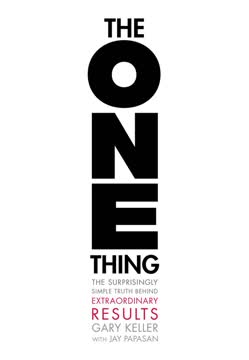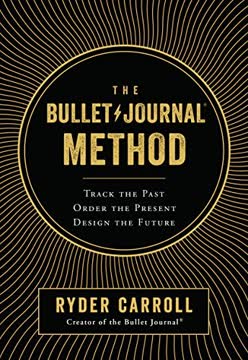Key Takeaways
1. Niche Down to Stand Out and Become Legendary
"Being different is the best way to become legendary."
Differentiation is key. In a world that teaches conformity, those who make their unique mark often achieve legendary status. By focusing on what makes you different rather than better, you can create exponential value. This applies to both individuals and businesses.
Examples of successful niche-downs:
- Muhammad Ali: First social-activist athlete
- Spanx: Reinvented shapewear
- GoldieBlox: STEM toys for girls
- Barcade: Combined arcade games with craft beer
Niching down allows you to own a specific category, making you the go-to expert or brand in that space. This strategy often leads to outsized earnings and influence within your chosen niche.
2. Identify and Solve a Unique Problem
"New categories are created when a new problem is defined (or an existing problem is re-imagined) — and solved."
Problem identification is crucial. Successful entrepreneurs often start by recognizing a problem that others haven't noticed or have accepted as the norm. They then develop a solution that addresses this problem in a new and compelling way.
Examples of problem-solvers:
- GOJO Industries: Invented liquid soap and hand sanitizers
- TerraCycle: Reimagined waste management
- Jen Groover: Created the first "organizer bag"
By focusing on solving a specific problem, you can create a product or service that people didn't even know they needed. This approach often leads to the creation of entirely new market categories.
3. Design Your Own Category and Own It
"Category design is the practice of teaching the 'beholders' you care about to value your offering the way you do."
Create your own playing field. Instead of competing in existing categories, design a new one where you can be the undisputed leader. This involves reframing the problem and educating the market about your unique solution.
Steps to category design:
- Identify a problem or reimagine an existing one
- Develop a unique solution
- Create a narrative around your category
- Educate the market about your approach
By designing your own category, you set the rules and become the standard against which others are measured. This position allows you to capture a significant portion of the market value.
4. Develop a Compelling Point of View (POV)
"Language changes how we think about things, so it's incredibly important."
Articulate your uniqueness. A strong POV helps you differentiate yourself and communicate your value proposition effectively. It should clearly explain the problem you're solving and why your approach is different and better.
Elements of a compelling POV:
- Clear articulation of the problem
- Unique perspective on the solution
- Vision for the future of your category
- Memorable language and framing
Your POV should be so clear and compelling that you can explain it in a brief conversation and have people immediately understand your value proposition.
5. Build and Nurture Your Ecosystem
"Every bit of success we enjoy comes from other people."
Cultivate relationships strategically. Your ecosystem includes customers, suppliers, partners, and communities of interest. By nurturing these relationships, you create a network of supporters who can help amplify your message and grow your business.
Ecosystem-building strategies:
- Provide value to your network
- Foster community engagement
- Collaborate with complementary businesses
- Leverage influencers and thought leaders
A strong ecosystem can provide valuable feedback, generate word-of-mouth marketing, and create opportunities for growth and innovation.
6. Leverage Technology to Scale Your Niche
"Modern technology makes it possible to become a personal enterprise again."
Embrace digital tools. Technology enables niche businesses to reach global audiences and scale their operations without the need for massive infrastructure. This levels the playing field for small entrepreneurs and allows for more personalized services.
Technology enablers for niche businesses:
- Social media platforms
- Cloud computing services
- Artificial intelligence and data analytics
- E-commerce and digital payment systems
By leveraging these tools, you can create a "personal enterprise" that reaches a global audience while maintaining the personalized touch that defines your niche.
7. Embrace Courage and Conviction in Your Journey
"It takes courage to be legendary."
Believe in your vision. Niching down often means going against conventional wisdom and taking risks. It requires the courage to stand out and the conviction to persist in the face of challenges and skepticism.
Characteristics of legendary entrepreneurs:
- Willingness to be different
- Resilience in the face of setbacks
- Commitment to their unique vision
- Ability to inspire others with their conviction
Remember that many great ideas look like failures before they become successes. Stay true to your vision and keep pushing forward.
8. Condition the Market to Accept Your Solution
"Conditioning the market is the process of teaching the market to think about a problem and a solution in a very particular way. Your way."
Educate your audience. When you're creating a new category or offering a unique solution, you need to help your potential customers understand the problem you're solving and why your approach is valuable.
Market conditioning strategies:
- Create content that explains your perspective
- Use storytelling to illustrate the problem and solution
- Leverage influencers and early adopters
- Develop a consistent message across all channels
By effectively conditioning the market, you create demand for your specific solution and position yourself as the category leader.
9. Price as a Declaration of Value
"Price is a declaration of value to the customer. And you must explain your rationale if you want to win."
Price strategically. Your pricing should reflect the unique value you provide and help position you within your niche. Don't compete solely on price; instead, focus on communicating the worth of your differentiated offering.
Pricing considerations:
- Understand the economic dynamics of your industry
- Price to cover costs and declare uniqueness
- Be prepared to articulate your value proposition
- Consider the psychological aspects of pricing
Remember that value is subjective. Your job is to help customers understand and appreciate the unique value you offer, justifying your pricing strategy.
Last updated:
FAQ
1. What is "Niche Down" by Christopher Lochhead and Heather Clancy about?
- Core Premise: "Niche Down" is about how individuals and small businesses can achieve legendary success by being different, not just better, and by creating and owning their own unique niche or category.
- Category Design Focus: The book introduces and explains the concept of "category design," a strategic approach to business and personal branding that emphasizes creating a new market space rather than competing in existing ones.
- Real-World Examples: Through stories of entrepreneurs, artists, and innovators, the authors illustrate how niching down leads to outsized impact and recognition.
- Actionable Guide: It serves as both a manifesto and a practical guide for solopreneurs, small business owners, and anyone seeking to stand out in a crowded world.
2. Why should I read "Niche Down" by Christopher Lochhead and Heather Clancy?
- Stand Out in Any Field: The book provides a roadmap for anyone who feels lost in the crowd and wants to become known for something unique.
- Practical Steps: It offers actionable advice and frameworks, not just theory, for designing your own niche and building a legendary career or business.
- Inspirational Stories: The book is filled with real-life case studies and interviews with successful category designers, making the concepts relatable and motivating.
- Applicable Beyond Business: The principles apply to personal branding, career development, and even creative pursuits, making it relevant for a wide audience.
3. What are the key takeaways from "Niche Down"?
- Be Different, Not Better: Success comes from being unique and creating your own category, not from trying to outdo competitors in existing markets.
- Fall in Love with the Problem: Legendary entrepreneurs focus on solving a specific, meaningful problem, often one that others overlook or define differently.
- Own a Niche: The most successful people and companies are known for one thing they can own, becoming the standard by which others are measured.
- Courage and Persistence: It takes courage to break from the pack, face failure, and persist in evangelizing your unique point of view.
4. How do Christopher Lochhead and Heather Clancy define "niching down" in "Niche Down"?
- Creating a Unique Category: Niching down means designing and owning a new market category or niche, rather than competing in someone else’s.
- Solving a Specific Problem: It involves focusing on a narrowly defined problem or audience, which allows for deeper expertise and stronger differentiation.
- Exponential Value of Difference: The authors argue that being different creates exponential value, while being better only offers incremental gains.
- Intentional Positioning: Niching down is a deliberate act of telling the world how to think about you or your business, rather than letting others define you.
5. What is "category design" and why is it central to "Niche Down"?
- Definition of Category Design: Category design is the strategic process of creating, developing, and owning a new market category, making you the reference point for that space.
- Beyond Branding: Unlike traditional branding, which focuses on name recognition, category design is about changing how people think about a problem and its solution.
- Market Leadership: The book cites research showing that category kings/queens capture the majority of market value, making category design a path to outsized success.
- Practical Application: "Niche Down" provides steps and examples for individuals and small businesses to apply category design in their own fields.
6. What is the "Magic Triangle" concept in "Niche Down" and how does it work?
- Three Pillars: The Magic Triangle consists of company design (business model), product design (what you sell), and category design (the market space you own).
- Balanced Success: Legendary success requires all three elements to be strong and aligned; focusing only on product or company without category design leads to mediocrity.
- Personal Application: For solopreneurs, the Magic Triangle means connecting your unique strengths to a real problem and positioning yourself as the solution.
- Strategic Foundation: The Magic Triangle is the foundation for building a legendary business or career, ensuring you’re not just another face in the crowd.
7. How do the authors of "Niche Down" recommend finding and defining your niche?
- Start with the Problem: Identify a specific problem that you are passionate about solving, especially one that is overlooked or poorly addressed.
- Leverage Your Uniqueness: Combine your unique skills, experiences, and point of view to approach the problem differently than anyone else.
- Test and Refine: Use feedback from real customers or audiences to refine your niche and ensure it resonates.
- Name and Evangelize: Clearly name your category or niche and actively teach the market to see the problem and solution through your lens.
8. What are some real-world examples of "niching down" from "Niche Down"?
- Spanx by Sara Blakely: Created the shapewear category by solving a personal problem in a new way, leading to a billion-dollar business.
- Nothing Bundt Cakes: Focused solely on bundt cakes, creating a new bakery niche and building a national franchise.
- Barcade: Invented the "arcade bar" category, combining craft beer with classic video games for a unique customer experience.
- John’s Crazy Socks: Built a multimillion-dollar business around fun, unique socks, tied to a social mission supporting people with disabilities.
9. How does "Niche Down" address the challenges and risks of niching down?
- Market Education Required: When you create a new category, the market may not be ready; you must teach and condition people to see the problem and value your solution.
- Courage to Be Different: It takes courage to break from the pack and face potential failure, criticism, or misunderstanding.
- Persistence Through Failure: The book emphasizes that failure is part of the journey; legendary category designers often start as "losers" before becoming legends.
- Narrower Audience, Deeper Loyalty: While your potential audience may be smaller, their loyalty and engagement are much stronger.
10. What practical steps or methods does "Niche Down" suggest for building a legendary niche business or career?
- Articulate a Clear POV: Develop and refine a compelling point of view about the problem you solve and how you solve it differently.
- Execute a "Lightning Strike": Use concentrated, high-impact marketing or PR efforts to grab attention and establish your category quickly.
- Build an Ecosystem: Cultivate a network of influencers, partners, and loyal customers who help spread your message and reinforce your category leadership.
- Be Transparent and Accessible: Build social credibility and a digital body of work so people can easily find, understand, and connect with you.
11. What are the best quotes from "Niche Down" and what do they mean?
- "Be known for a niche that you own." – Emphasizes the importance of creating and dominating your own category rather than competing in someone else’s.
- "It comes down to leveraging the exponential value of what makes you or your venture 'different' rather than leaning on the incremental value of what makes you 'better'." – Highlights the book’s core message that difference, not improvement, leads to outsized success.
- "Legends become category queens / kings by 'owning' their niche. And, as a result, they become the standard by which all others are measured." – Underlines the ultimate goal of category design: to be the reference point in your field.
- "Failure is our teacher. Failure is our friend. Failure is our coach." – Encourages readers to embrace failure as an essential part of the journey to legendary status.
12. How does "Niche Down" by Christopher Lochhead and Heather Clancy differ from other business or self-help books?
- Focus on Small Players: Unlike many business books aimed at large companies, "Niche Down" is specifically written for solopreneurs, small businesses, and individuals.
- Category Creation Over Competition: The book shifts the focus from competing to creating, teaching readers to design their own market space rather than fight for scraps in existing ones.
- Blend of Inspiration and Tactics: It combines motivational stories with concrete, actionable steps, making it both inspiring and practical.
- Emphasis on Personal Story: The authors share their own journeys and vulnerabilities, making the advice relatable and grounded in real-world experience.
Review Summary
Niche Down receives mixed reviews, with an average rating of 3.84 out of 5. Positive reviews praise its inspirational content, real-world examples, and emphasis on being unique in business. Readers appreciate the book's message of "be different, not better" and its insights on category design. Negative reviews criticize its lack of depth, organization, and concrete tips. Some readers find it repetitive and view it as an advertisement for the author's podcast. Overall, the book is seen as a quick read that offers valuable perspectives on entrepreneurship and personal branding.
Similar Books










Download PDF
Download EPUB
.epub digital book format is ideal for reading ebooks on phones, tablets, and e-readers.




